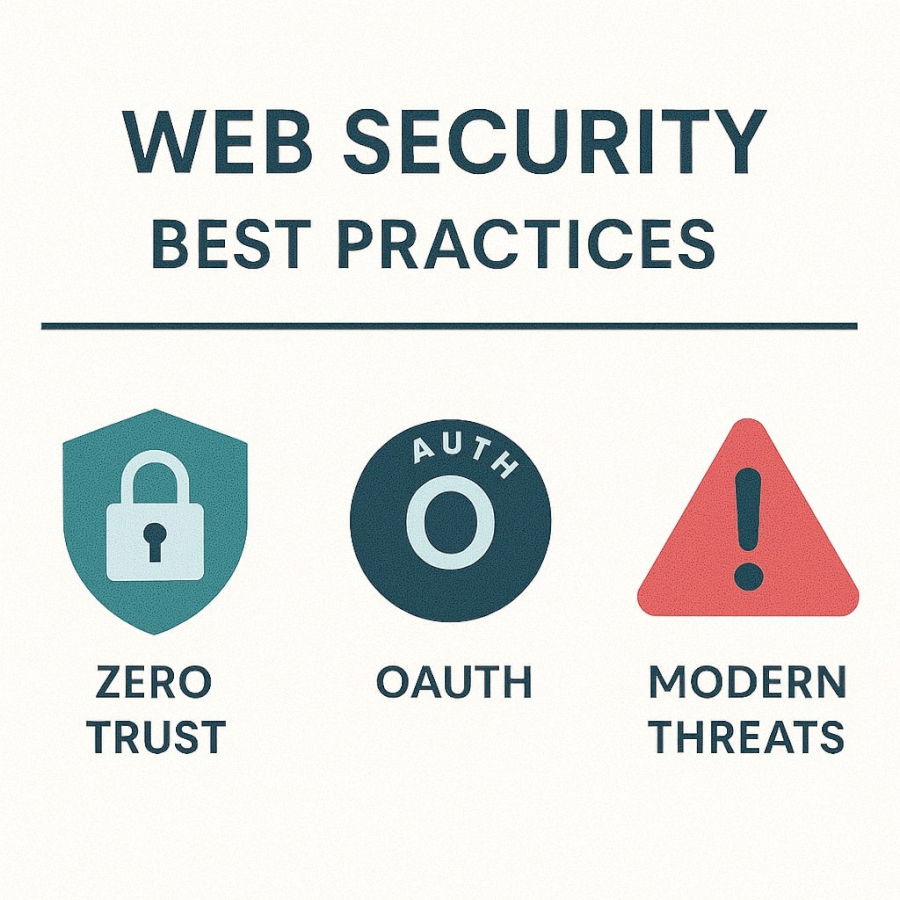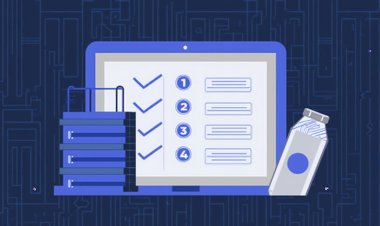Web Security Best Practices: Zero Trust, OAuth, and Modern Threats
23 May 2025
In 2025, web applications face more complex threats than ever before. From phishing and data breaches to advanced bot attacks and API exploits, securing your digital infrastructure is no longer optional—it's essential. This guide explores three core pillars of modern web security: Zero Trust architecture, OAuth authentication, and defense strategies against modern threats.
Zero Trust Architecture: “Never Trust, Always Verify”
Zero Trust is a security model that assumes no user, device, or system is inherently trustworthy—whether inside or outside your network. Access is granted based on real-time verification, not location or prior authentication.
Key principles of Zero Trust:
- Continuous authentication and authorization
- Micro-segmentation of networks and services
- Least privilege access for users and systems
- Multi-factor authentication (MFA) across all access points
Zero Trust helps organizations protect sensitive data, reduce attack surfaces, and respond quickly to threats—even from compromised internal systems.
OAuth: Secure Authorization Without Sharing Passwords
OAuth 2.0 is an industry-standard protocol for delegated access. It allows applications to request limited access to user accounts on another service (like Google or Facebook) without exposing the user’s credentials.
Benefits of OAuth:
- Secure token-based access to APIs and services
- Supports scopes for limited, granular permissions
- Widely adopted by major platforms and identity providers
Common OAuth flows:
- Authorization Code Flow – Ideal for server-side apps
- Implicit Flow – For browser-based clients (now discouraged)
- Client Credentials Flow – For machine-to-machine APIs
- PKCE – Secure mobile and single-page app authorization
In 2025, implementing OAuth correctly—with secure redirect URIs, short-lived tokens, and token rotation—is key to preventing unauthorized access.
Modern Threats in Web Security (2025)
Threat actors are evolving, and so must your defenses. Here are some of the top threats developers and security teams are tackling today:
- Cross-Site Scripting (XSS): Injected scripts run in the browser. Use CSP headers, input sanitization, and secure frameworks.
- Cross-Site Request Forgery (CSRF): Malicious actions via a user’s authenticated session. Mitigate with CSRF tokens and SameSite cookies.
- API Abuse: Bots, scraping, and DDoS attacks on public APIs. Use rate-limiting, API gateways, and behavior monitoring.
- Session Hijacking: Attacks via stolen cookies or tokens. Mitigate with short-lived tokens and device fingerprinting.
- Phishing & Social Engineering: User-targeted attacks to steal access. Train users and use phishing-resistant MFA (e.g., FIDO2).
Web Security Checklist for 2025
- ✅ Enforce HTTPS and HSTS for all web traffic
- ✅ Apply the principle of least privilege to all users and systems
- ✅ Implement MFA everywhere possible
- ✅ Use modern identity protocols like OAuth 2.0 and OpenID Connect
- ✅ Monitor API activity and block suspicious patterns
- ✅ Keep all libraries, frameworks, and servers up to date
Conclusion
As the web evolves, so do the threats. Security in 2025 requires a mindset shift—from static perimeter defense to dynamic, real-time trust evaluation. Whether you're building SaaS platforms, fintech apps, or e-commerce portals, embracing Zero Trust principles, OAuth authorization, and proactive defense strategies is essential to protect your users and business.


